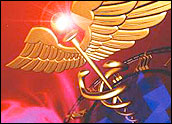
What U.S. business wouldn’t want a customer base of 37.5 million prospects? In 2008, hospitals in the U.S. registered that many admissions — a number that equals 12 percent of the U.S. population. Yet the hospitals in the U.S. have largely underutilized the customer relationship management tools that could exploit the data in that customer base to create significant increases in business volume and more profitable operations.
In a sluggish economy, hospitals could use a shot in the arm to attract more clients — especially customers with the ability to adequately compensate the medical facilities.
The current economy “is taking its toll on the patients and communities that hospitals serve,” the American Hospital Association reported in November — and that’s not even mentioning the toll it’s taking on hospitals themselves.
Nine in 10 hospitals have made cutbacks in expenses — including information technology — and 34 percent of hospitals expect to incur a loss through the first half of 2009, versus 29 percent last year, AHA reported.
Something in the neighborhood of 15 percent — or less — of all U.S. hospitals employ programs that meet the criteria of a workable CRM system.
“Hospitals are beginning to recognize the value of using relationship management solutions in support of their efforts to improve the patient experience and establish a more collaborative relationship between patients, families, the community and physicians,” Marc Perlman, global vice president of healthcare and life sciences at Oracle, told CRM Buyer. “However, the percentage of hospitals currently using this technology remains relatively small overall.”
With nearly 5,200 hospitals in the U.S., that leaves a lot of potential for implementing CRM systems.
“We are seeing an uptick in interest and inquiries on consumer and patient relations issues,” Judy Hancock, a healthcare analyst at IDC, told CRM Buyer.
The interest in cultivating consumers stems “partly from the reimbursement squeeze hospitals are getting from health insurance providers,” Hancock said, and also from “the high level of competition among hospitals, especially in metro and suburban areas.”
However, there is still an awareness gap in the hospital sector regarding CRM.
Hospitals Use Conventional Marketing
“The real challenge we face is that healthcare marketing in the U.S. is incredibly backward,” Tom Corry, president of Healthcare Data Insights and Analytics, told CRM Buyer.
Most healthcare facilities take a fairly standard approach to marketing — if they pay any attention to that function at all. While many hospitals may claim they have a staff “customer relations manager,” often the person comes from a clerical, marketing or public relations background, or simply acts as a hospitality coordinator or greeter.
Usually the tools hospitals employ to generate traffic, such as TV or billboard advertising, are conventional as well — and they are expensive. CRM solutions can be relatively modest in cost and provide the feedback to actually measure their effectiveness in traffic generation or ROI, noted Corry.
The most beneficial CRM activities are built on comprehensive data collection, information management, and the generation of market targeting vehicles that drive customer traffic, according to Corry. Yet many hospitals are unaware of the potential value of using both internal and external data, even though they have made progress in using technology for patient recordkeeping.
“Some of these hospitals take a loose definition of ‘CRM.’ Having an automated telephone appointments program is not CRM. And anyway that kind of tool is a reactive approach,” John Hallick, CEO of CPM Marketing Group, told CRM Buyer.
“The real scope of CRM is to be proactive, to use a robust knowledge base, with scientific analytics and feedback mechanisms, to come up with a tactical plan to generate patronage,” he added.
One difficulty in applying CRM in a hospital setting is that hospital patients are not the direct consumers of the service in the sense that insurance providers — rather than patients — are the parties that actually pay the bills. Also, physicians have a big role in selecting hospitals on behalf of patients.
“So you’ve got that divide in the relationship that’s unlike a consumer dealing directly with a bank for a loan product,” IDC’s Hancock said.
A CRM Goldmine
That’s where the 37.5 million hospital admissions database comes in. Hospitals have, or should have, a wealth of information on current and past patients. Much of this data is privacy protected under the federal Health Insurance Portability and Accountability Act (HIPAA). Even allowing for those protections, however, hospitals can generate market profiles using their own records and available external databases.
“There are huge amounts of information that can be marshaled by a CRM system. You can match hospital billing data with geo-demographic data, as well as financial information like who owns a home or rents. All of that can be rolled into a database of prospects,” Corry noted.
Another useful source of data includes the results of requests for information by consumers from call-in channels or Web site inquiries.
Age and gender data alone can help in the construction of a target market of potential customers who can be contacted by health-oriented direct mail or email campaigns — such as screenings and exams for prostate, diabetes, weight control, pulmonary and heart issues. Patients who have been treated for certain conditions can be sent reminders to re-visit the hospital clinic for periodic follow-up exams.
Similar databases can be constructed for people who have not even been treated at a given hospital, as well as for people who are newcomers in the neighborhoods served by hospitals.
With an aging population, the market for hospital services is expanding, Corry observed, but consumers are increasingly interested in making their own healthcare decisions. Physicians often are affiliated with several hospitals, providing patients with choices. Mass advertising to reach the market is both expensive and ineffective. However, CRM tools can be used to target marketing efforts at those consumers who are most likely to need medical services.
New Customers and a Positive ROI
While the vast majority of U.S. hospitals have failed to capitalize on CRM, enough have successfully implemented such programs to demonstrate the potential benefits. In a 2008 campaign directed by HDIA, a group of six Florida hospitals used CRM tools to launch a direct mail campaign that generated $1.9 million in new revenue in three months, Corry said.
The effort was segmented to target potential cardiology patients. The ROI for the program, he said, was six to one.
In addition to marketing efforts, CRM systems can be integrated with other IT applications. Oracle’s system, for example, supports hospitals that are interested in personalized and interactive Web sites, health awareness, online bill paying, pharmacy discharge activities and even nurse triage.
Hospitals using CRM techniques can do well by doing good, noted CPM Marketing Group’s Hallick.
“This is a positive intervention situation,” he said. “By encouraging people to get screenings and exams, you can often prevent major illness situations, which is good for consumers and saves a lot of treatment expense down the road.”





















































